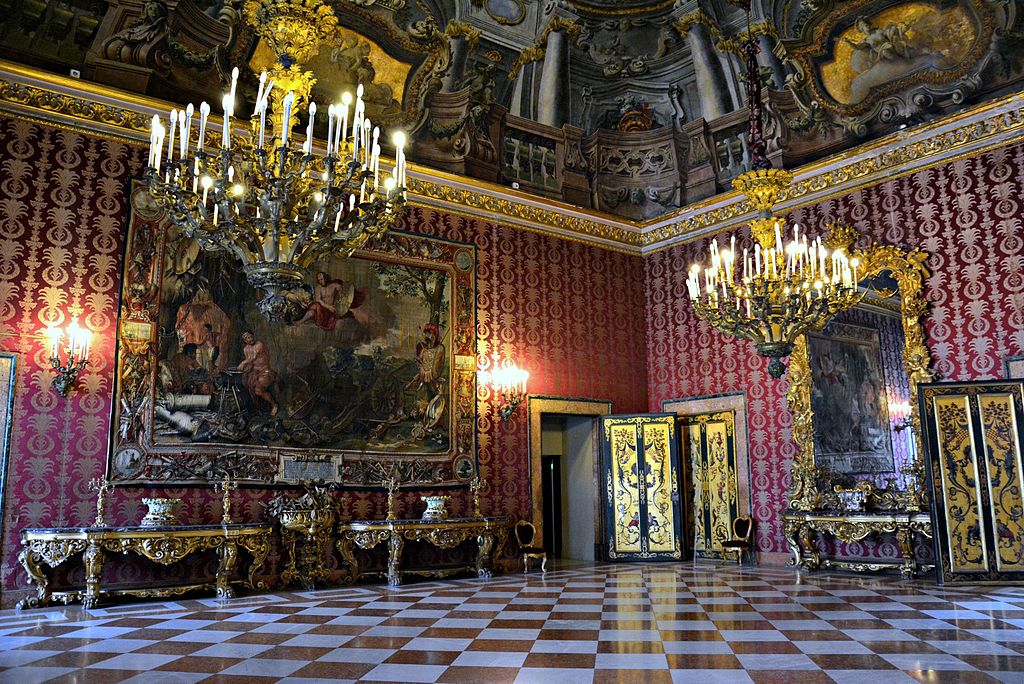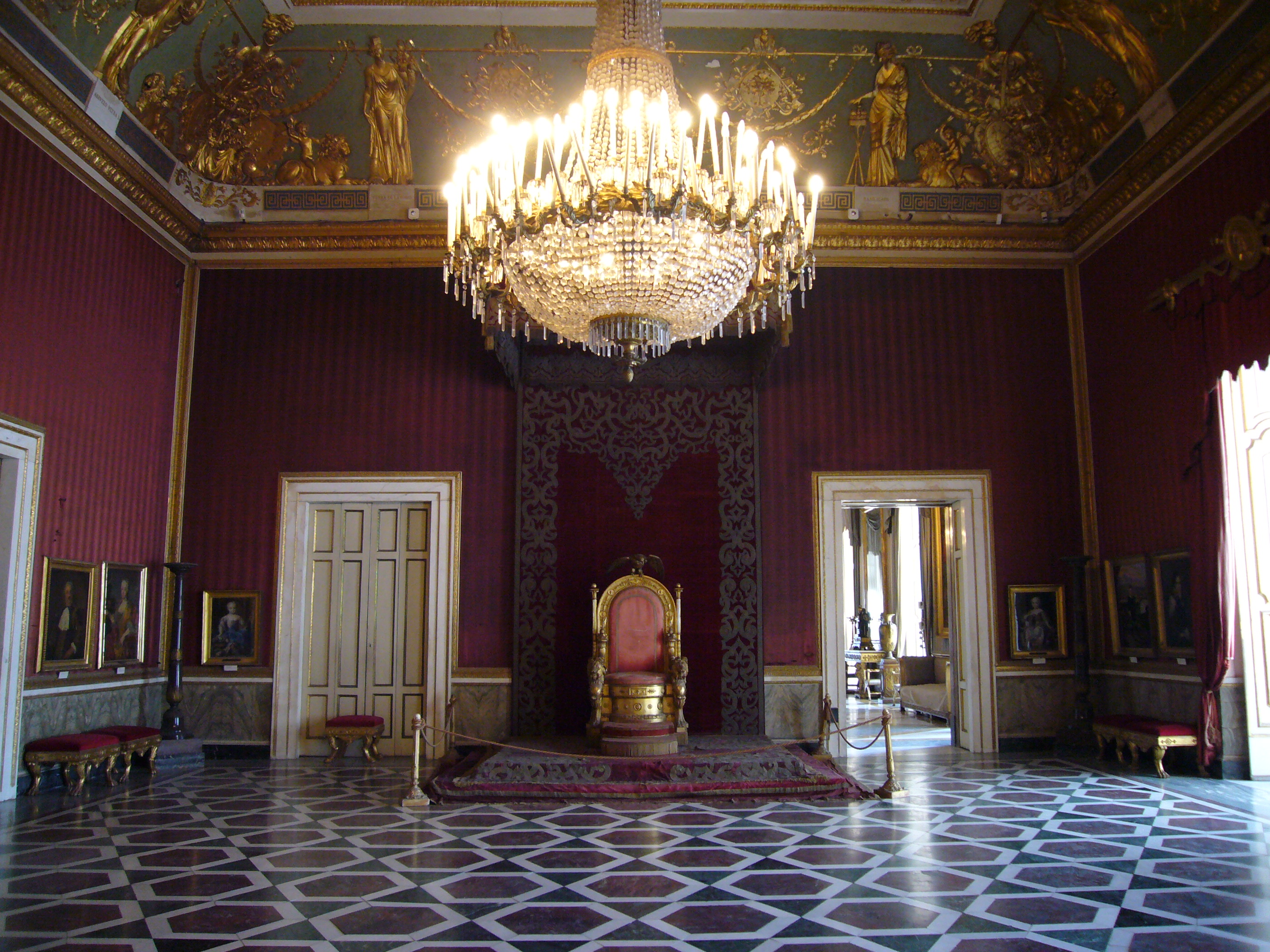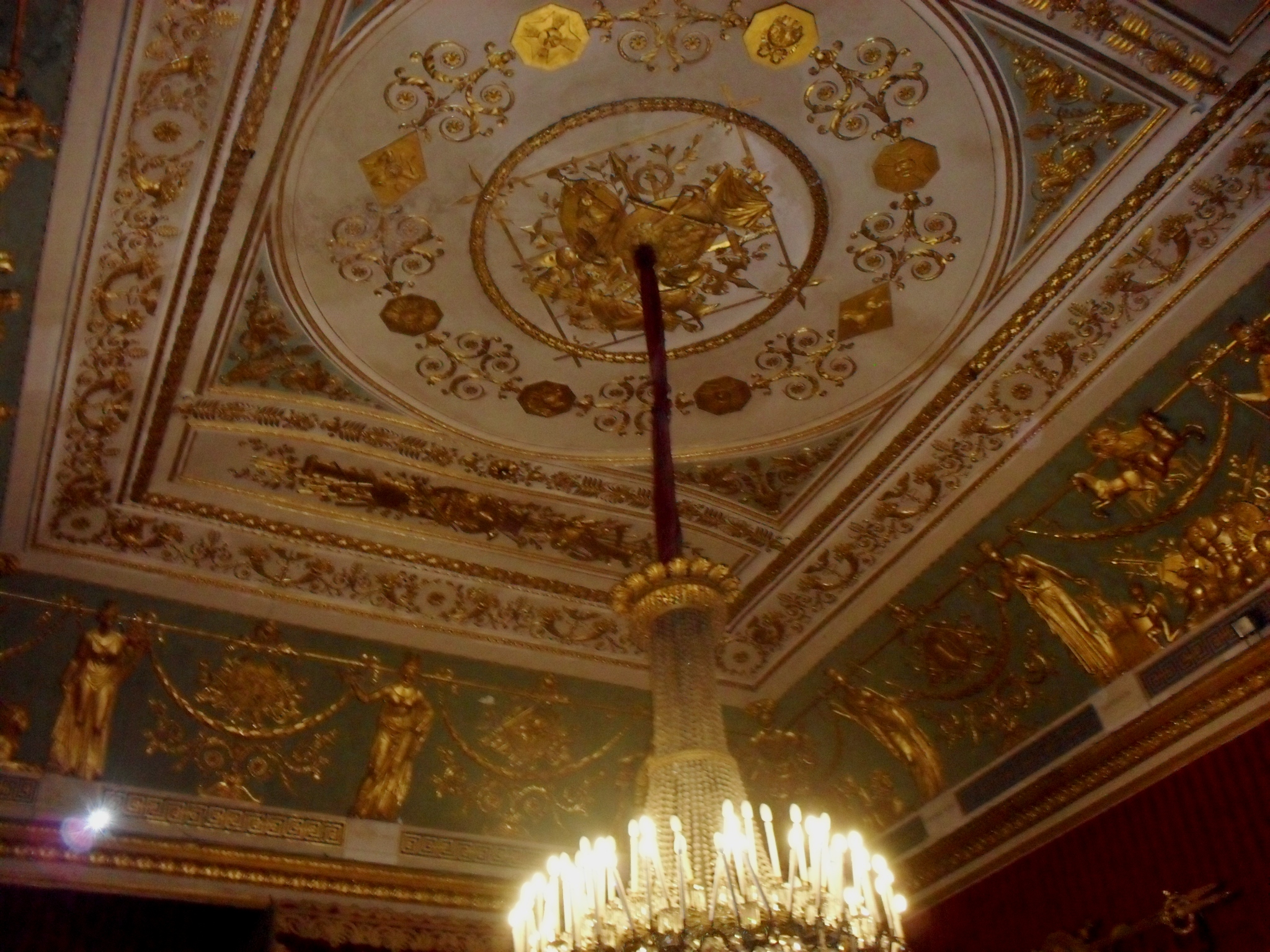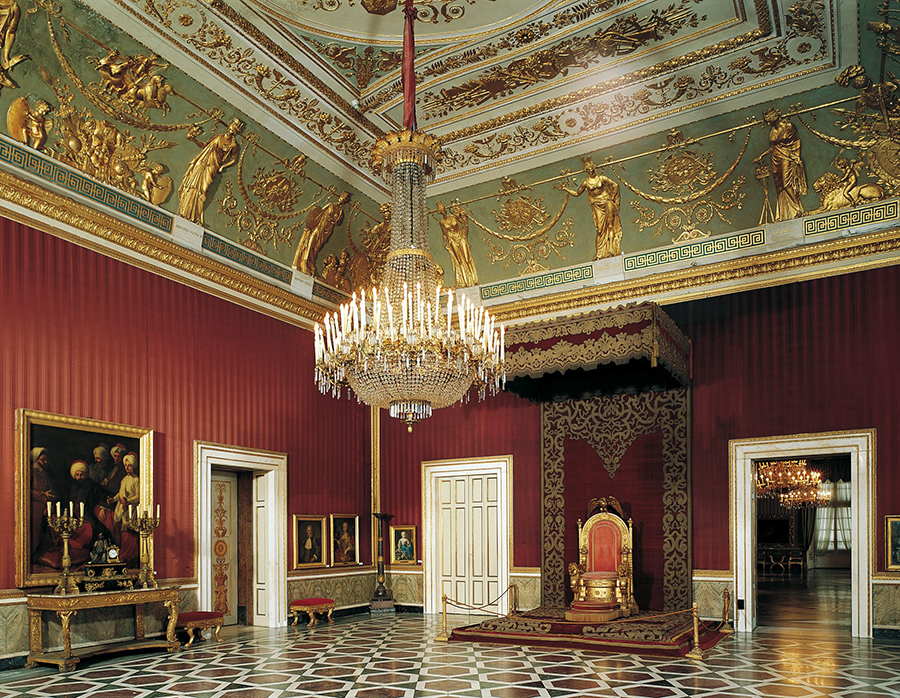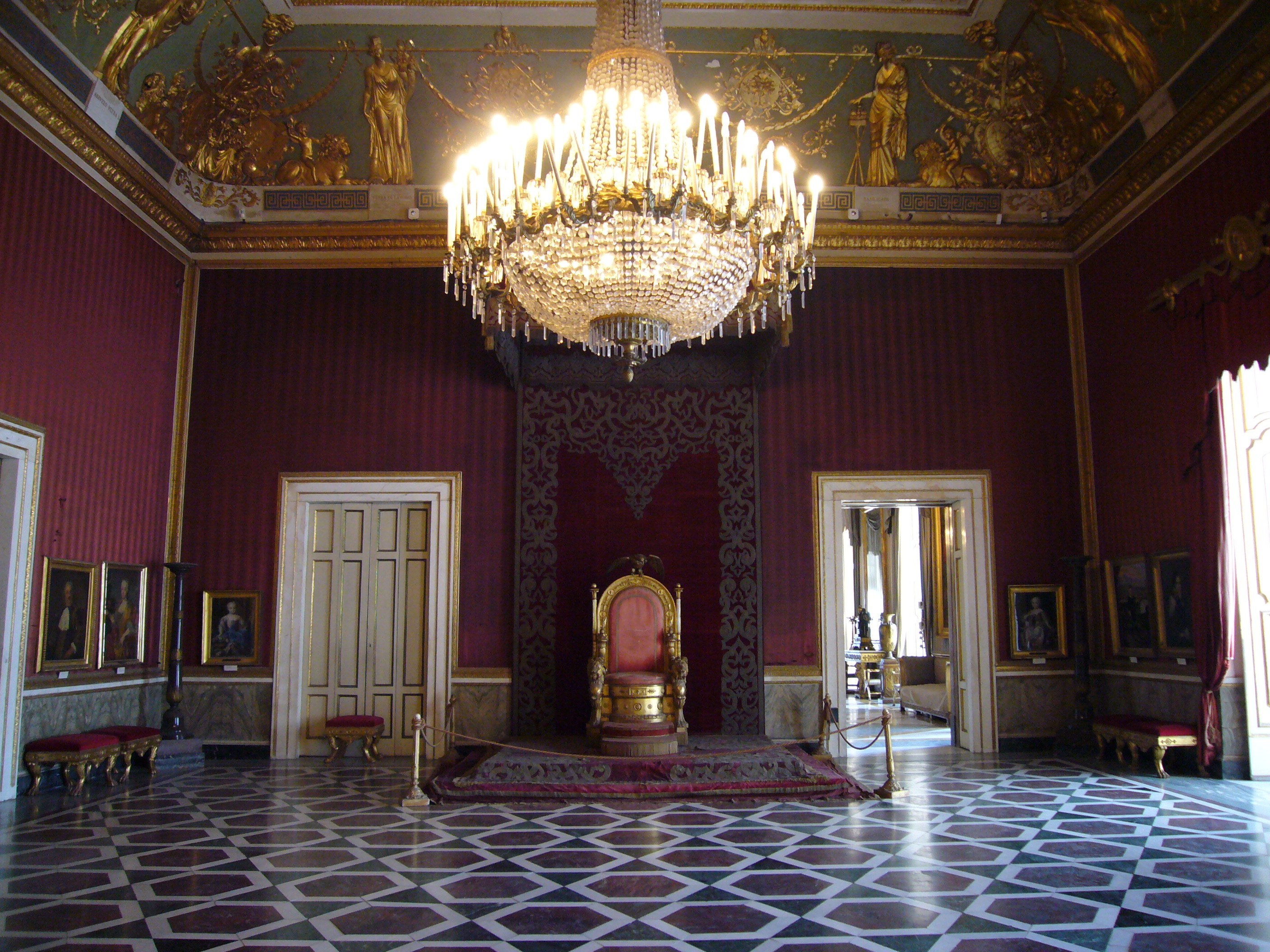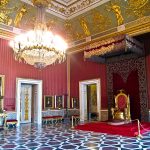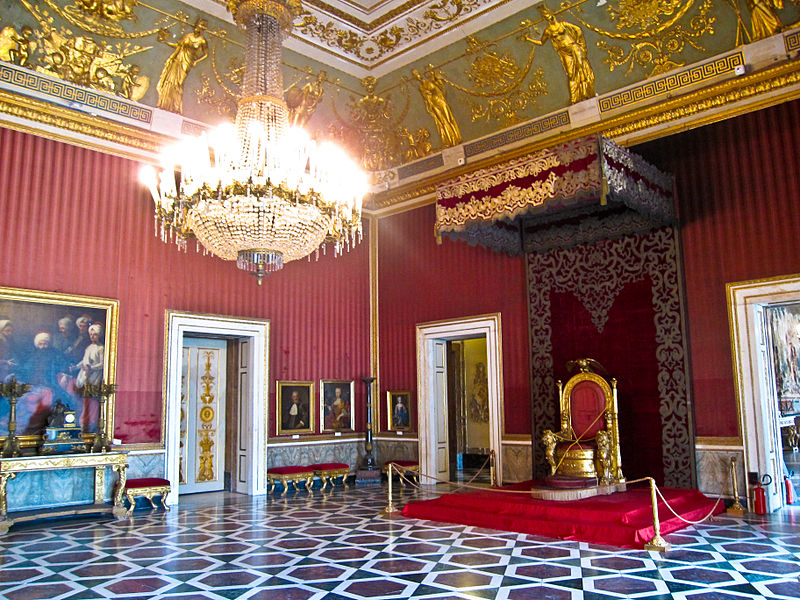
Throne Room of the Royal Palace of Naples
Before entering the Throne Hall where the king received his guests there are the first, the second and the third room of the hall. The first room of the vestibule or the Diplomatic Room, so called because in it were standing diplomatic delegations visiting the King, in Baroque style.

